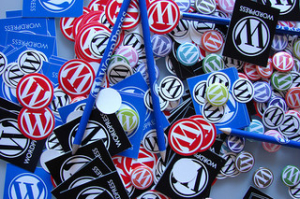When it comes to your business’ branding, the colors and images you choose for your logo and marketing collateral are often a focal point. But beyond these initial efforts, these things tend to take a backseat. If you’re no longer considering such important elements like colors and images, especially within your blog or other content marketing initiatives, you may be missing out. After all, it only takes 90 seconds for someone to form an opinion about a product, and over 60 percent of that opinion is based on the color of the product alone, according to research published in the journal of Management Decision.
So here’s a peek at three things you can do to make the most of visual aspects within your blog for deeper resonance with your customers and prospects.
Consider Your Audience
When thinking about what colors to use within your creative content, start by reflecting on who you’re trying to reach. If your blog post is geared toward your local customer base, it’s safe to say that cultural norms you’re familiar with will apply. But if you’re writing a piece or constructing an infographic that’s meant to answer questions for prospects overseas, keep in mind that their perceptions of colors and images may differ from your own. For instance, there are some common color associations held within the states.
Yellow is widely seen as optimistic, while red is viewed as energetic. But in another country, this may not be the case. Do your due diligence and find out what is acceptable within the region you’re targeting so you can be sure you’re welcoming, and not offending, potential buyers.
Pursue a Feeling
When working to connect with your audience, the ultimate goal is to make them feel something. Feelings ranging from joy to nostalgia to wistfulness and beyond can be powerful if used correctly. Say your next blog post centers on how your business can help free up your customers’ time for the upcoming holidays. This would be an opportune time to include a stock photo from a service like Shutterstock of a family gathered around a fireplace. Your readers will get much more than just some information from your piece, they would feel a tugging at their hearts too.
This makes your brand more human and relatable, which can make customers feel an increased sense of loyalty to you. Consider both the image itself, as well as the colors within the image, when choosing what to incorporate into your posts for optimal impact.
Establish Your Sincerity
A lot of opinions about color theory have been bandied about, some backed by research and others not. But whether or not a certain color truly evokes a particular emotion, or one image always results in some desired effect, the fact remains that colors and images do play a part in customer perception about your brand. It seems that the biggest key to successfully using both elements is their appropriateness in relation to what you’re selling, and their ability to affirm your company’s sincerity. For instance, a shoe brand known for its hiking boots should choose colors that are associated with nature and ruggedness, like brown or green.
And a brand that positions itself as being warm and friendly should use colors and images that reflect these traits, like warm tones and smiling faces.
When all is said and done, the colors and images you select for use within your branding or content marketing should be chosen with care. While they may not single-handedly make or break your relationship with your customers, they do play an important role in supporting who you are as a brand and what product or service you deliver.
Take some time and delve into who your audience is, aim to use colors and images to help them feel something and, above all, be sure the visual elements you use back up the core of your business.
By tapping into the psychology behind these aesthetic components of your storytelling, you can reach further people—with far more depth.
 The clock is ticking and we have entered a brand New Year.
The clock is ticking and we have entered a brand New Year.
